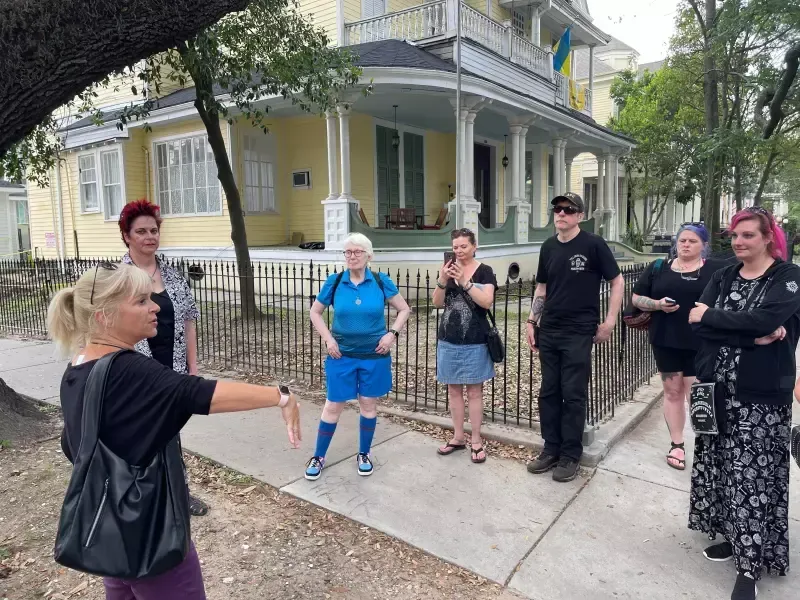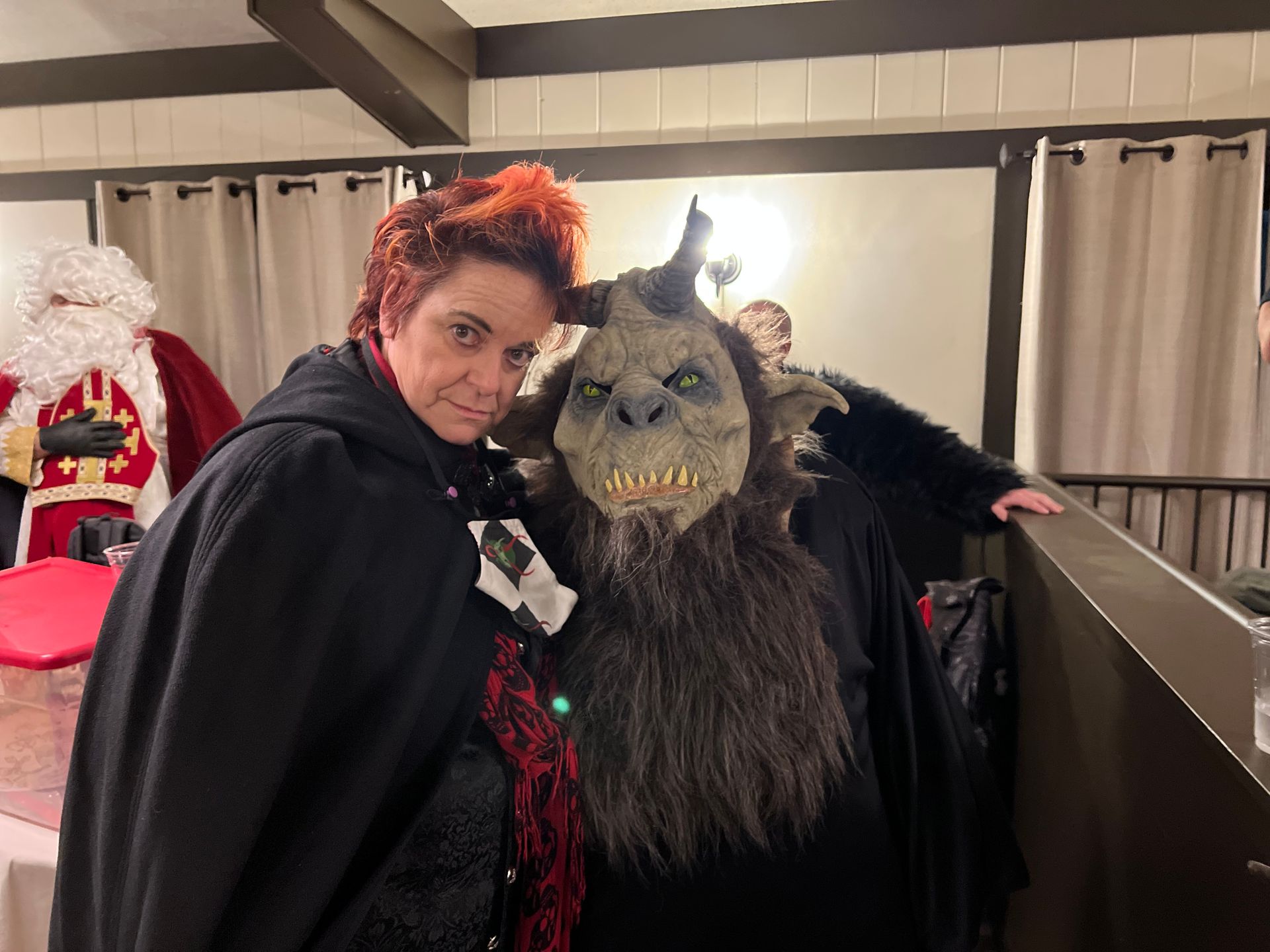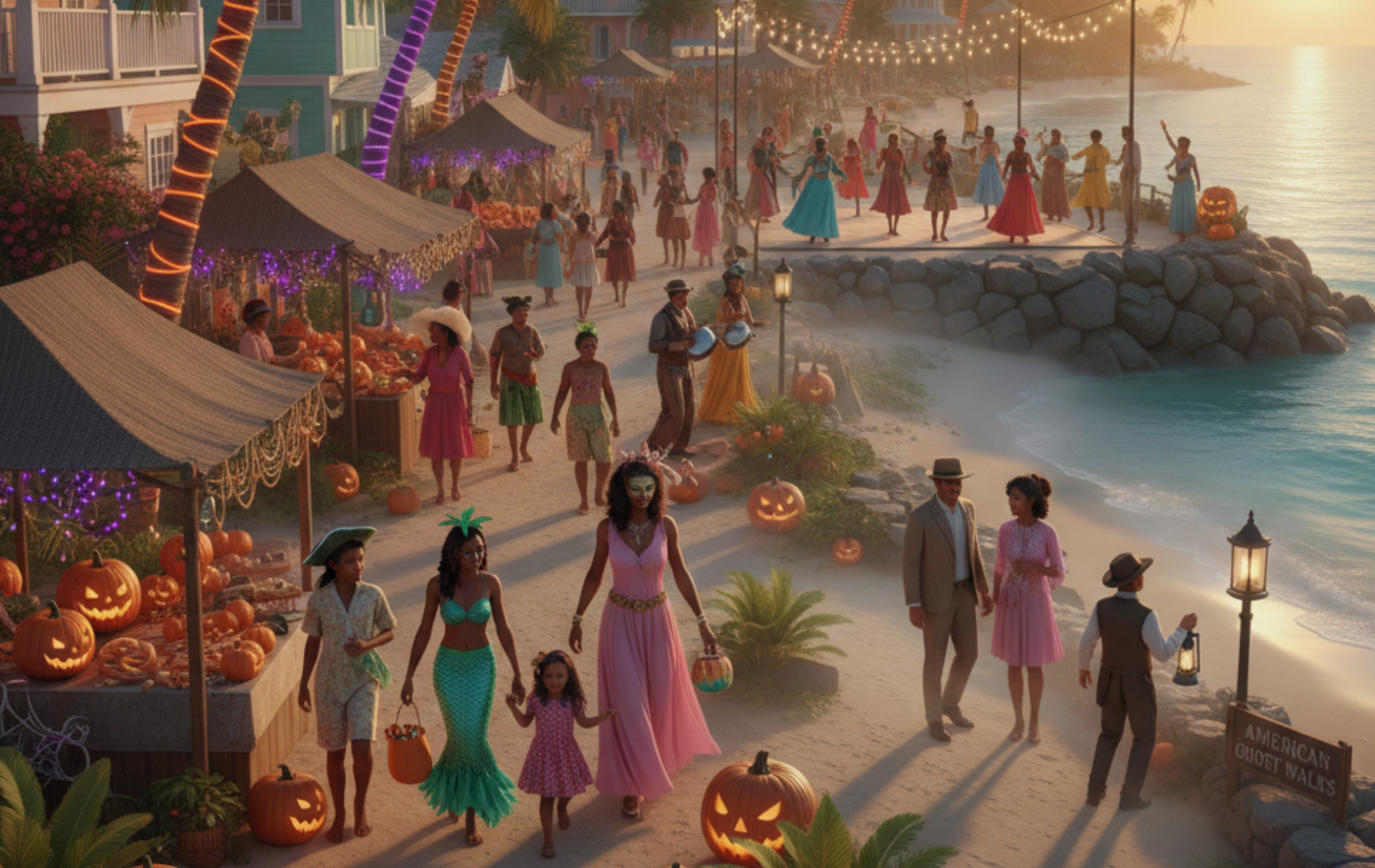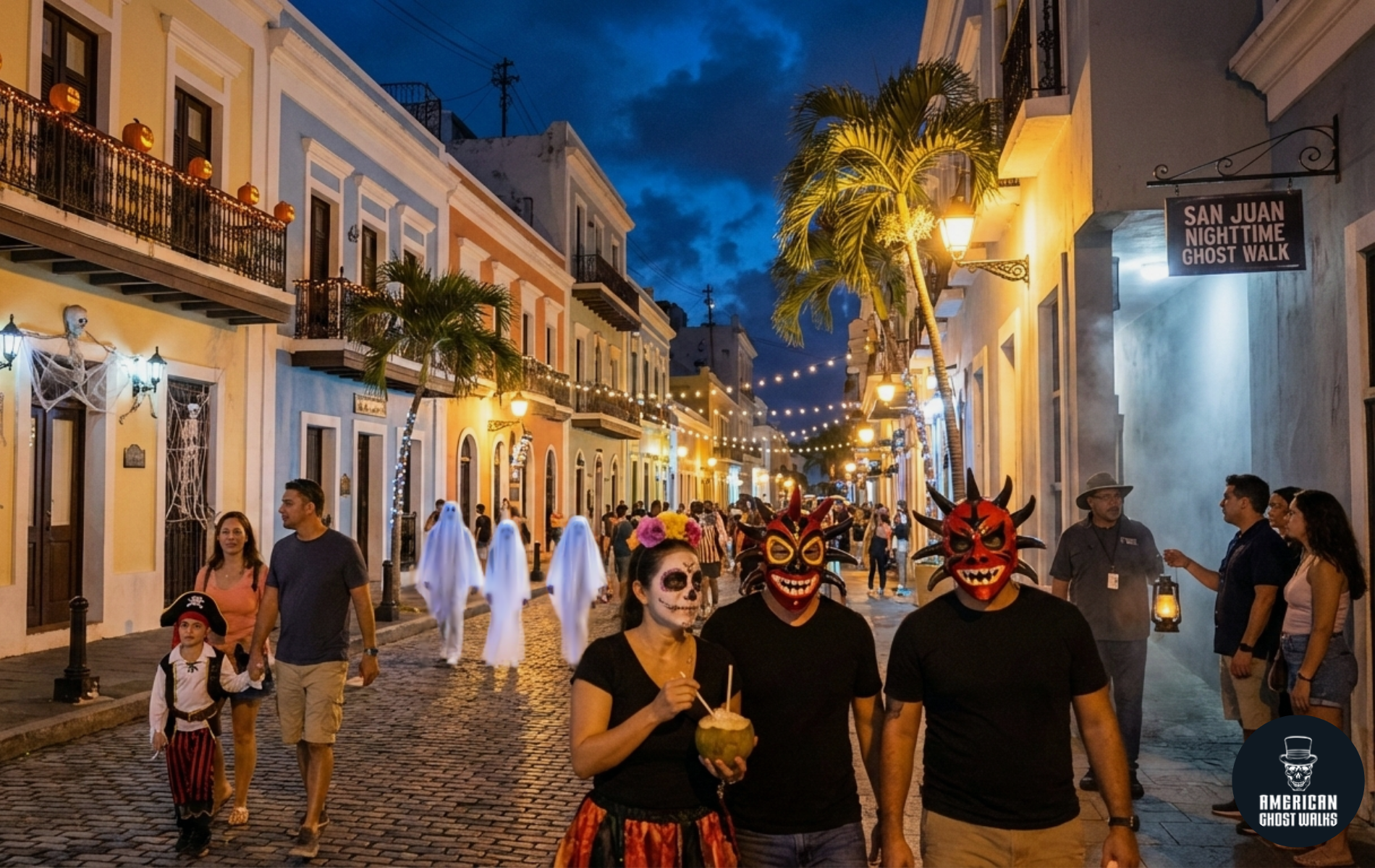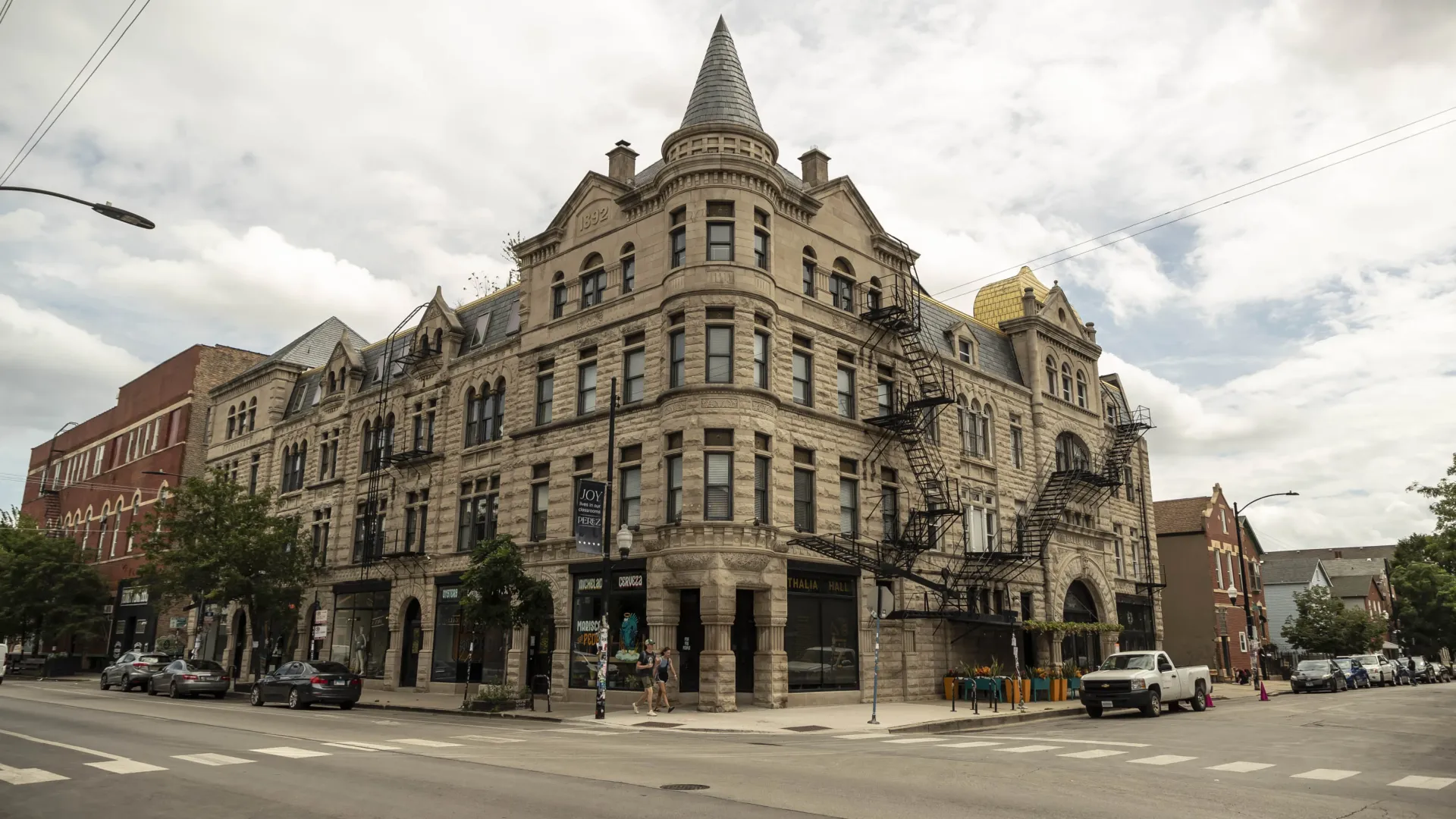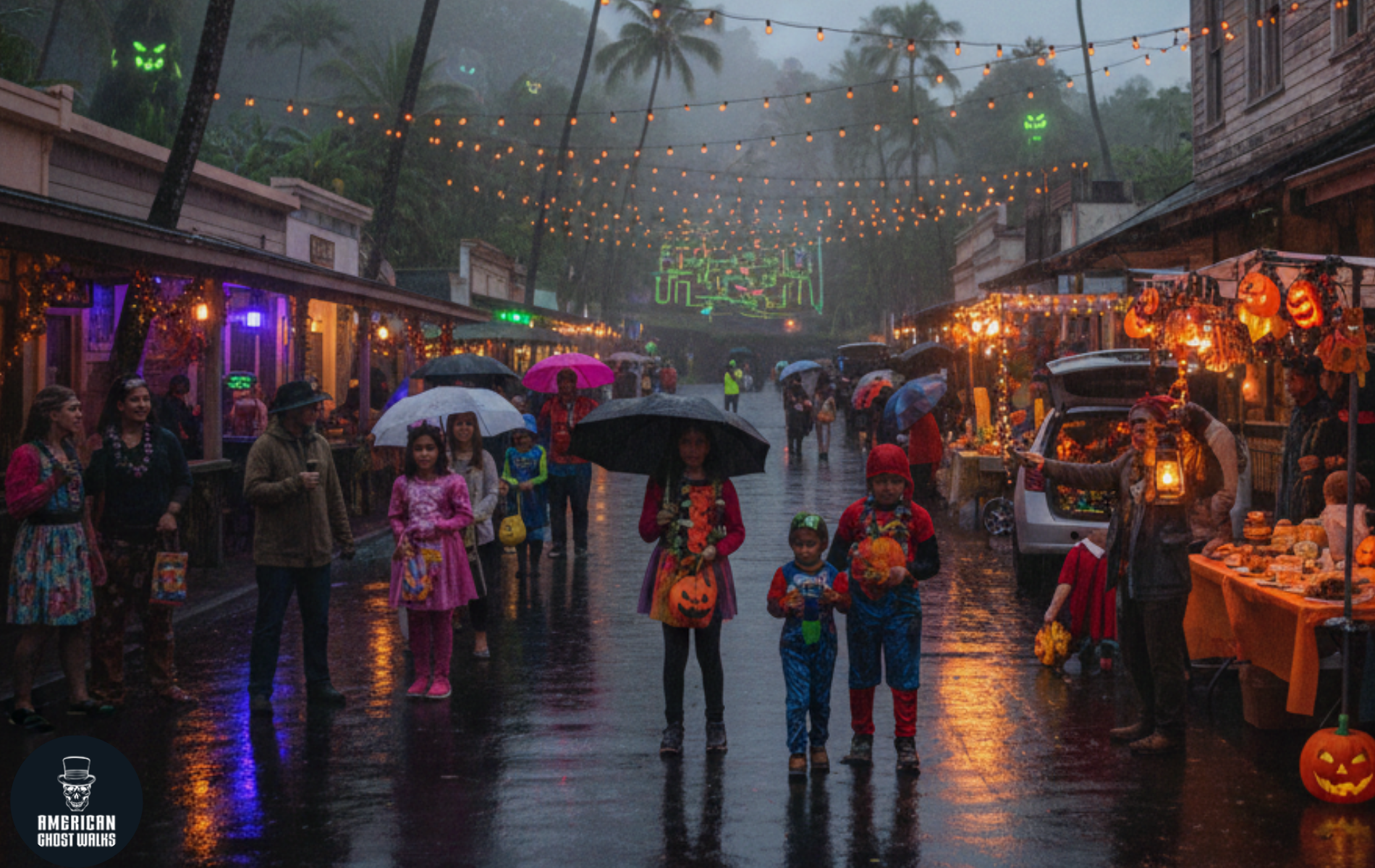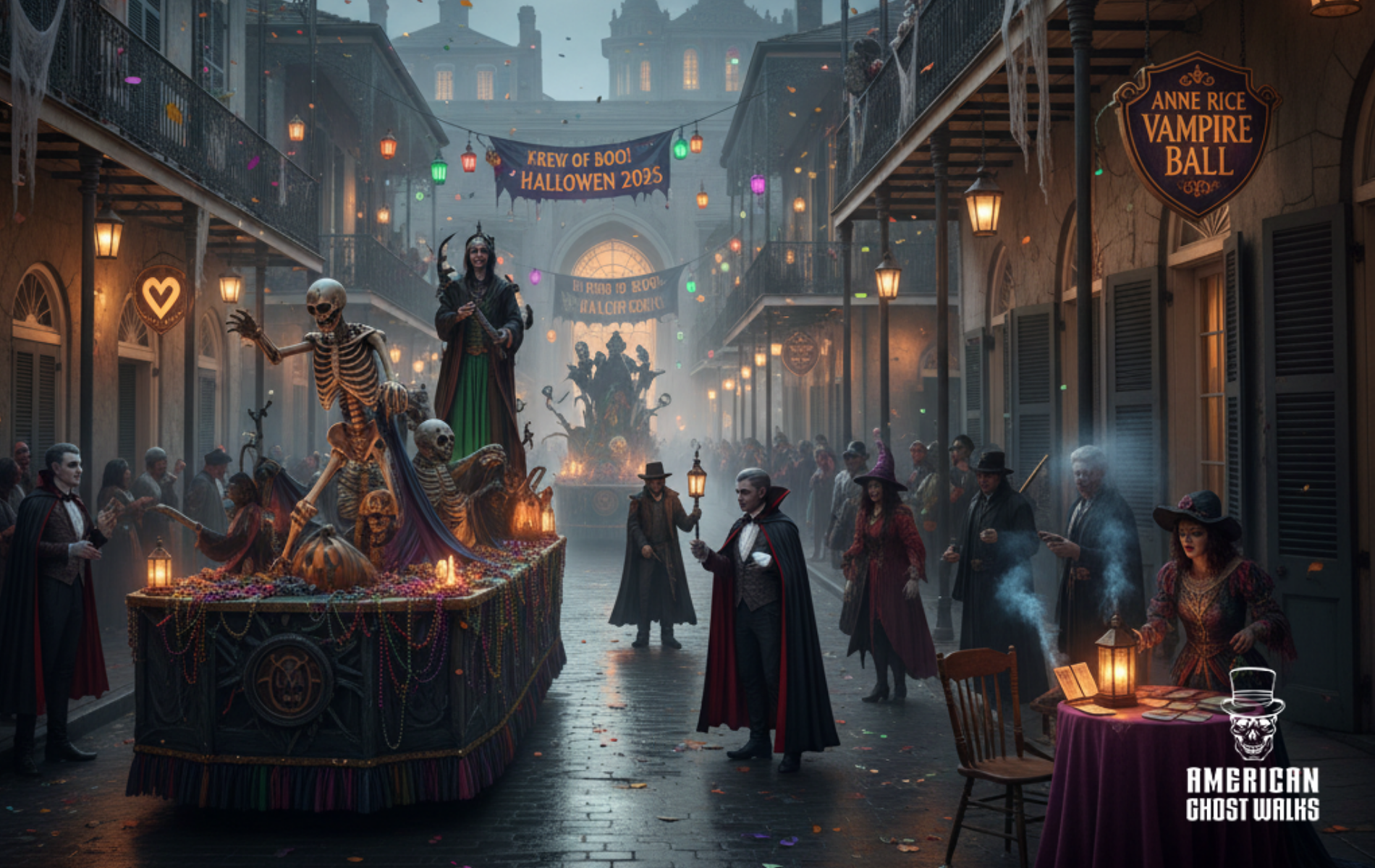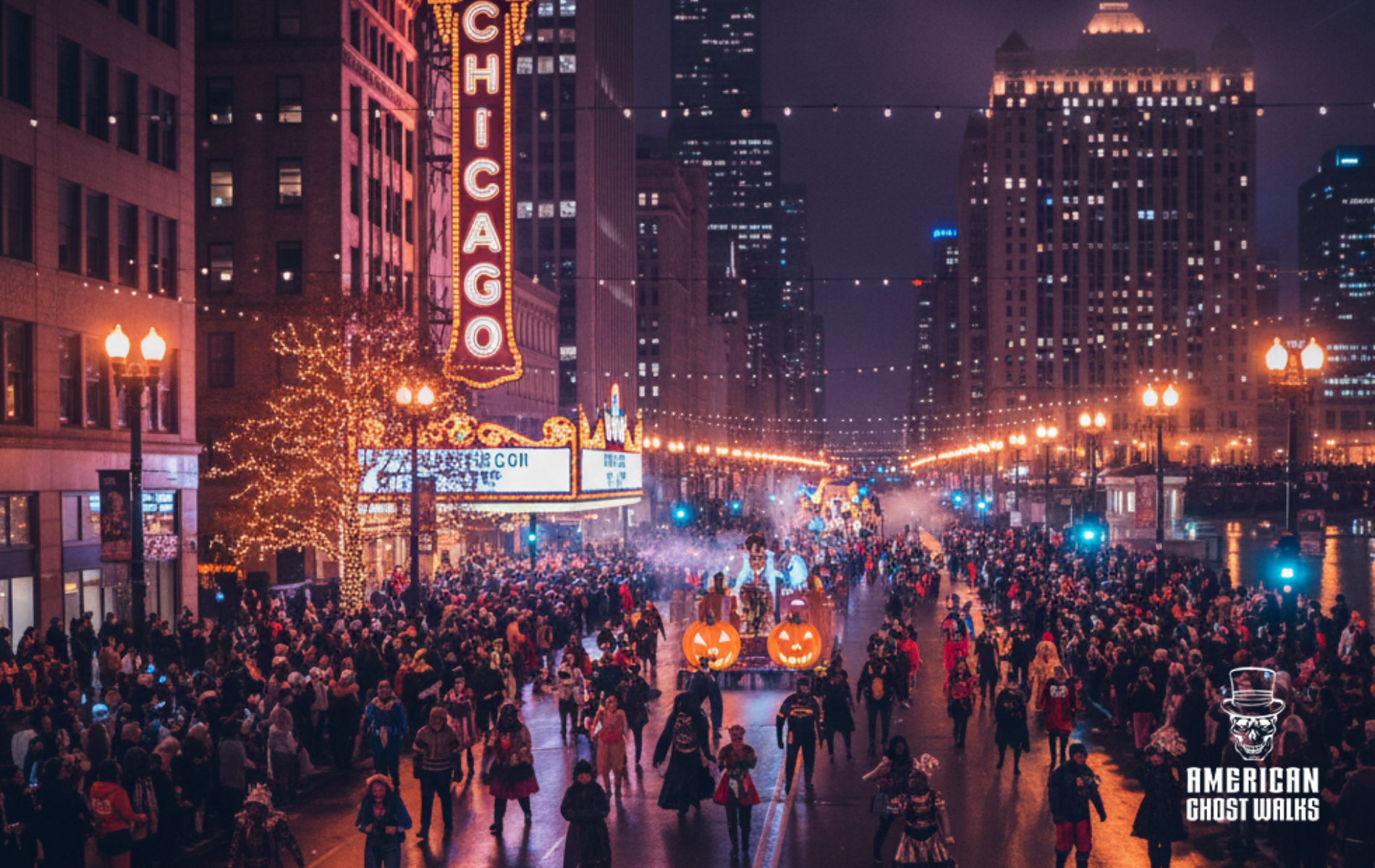Paranormal Plantation: The Haunting of The Myrtles
Spanish moss hanging from towering oaks, garden statues resembling a woman and children turned to stone, and a grand antebellum home filled with curious antiques, The Myrtles Plantation certainly looks the part of a haunted Southern plantation house. Located in Louisiana's West Feliciana Parish, in the town of St. Francisville. It's about 100 miles northwest of New Orleans and 30 miles north of Louisiana's capital, Baton Rouge.
It was built circa 1796 by General David Bradford, who was a leader in the Whiskey Rebellion, a protest against the newly formed federal government's whiskey tax. After George Washington himself ordered Bradford’s execution, he fled to Louisiana, where Bradford eventually acquired the land that would become his plantation, which he called Laurel Grove.
The Myrtles Plantation has been called the most haunted house in America. The first reports of paranormal activity likely originated long ago within the families of former owners but were first written about in the 1900s and some of the Myrtle Plantation ghost stories were documented during the Federal Writer's Project in 1941 and in the 1948 photolog, "Ghosts Along the Mississippi," by Clarence Laughlin.
Many vacationers seeking a scare, including Hollywood luminaries Dan Aykroyd, Nicholas Cage, and Hilary Swank, have stayed the night. Unsolved Mysteries filmed there in 2002, and the Ghost Hunters shot an episode there in 2005 as well.
Chloe, a vengeful ghost?
While David Bradford died in 1808, his daughter Sara married one of David’s law students, Clark Woodruff, and they operated the plantation there until Bradford’s wife died in 1831. The most famous of the reputed ghost stories of New Orleans at the house comes from this time. A slave named Chloe was reportedly pressured or forced Chloe into being his mistress. According to Hester Eby, who gave tours at the Myrtles for almost thirty years, in an interview that we did in 2012, she tells the story:
The story of Chloe and the children began with the second owner Judge Clark Woodruff who supposedly took Chloe on as a mistress. She was caught eavesdropping some of the family's business that was not allowed. It was during the time that they believed whatever caused you to sin should be removed. So Judge Woodruff cut off her left ear.
That left her so upset that she baked the birthday cake for his oldest daughter and used the juices from the Oleander leaf in that cake, killing the judge's wife, Sarah, and 2 of her children. And there are 3 of the ghosts along with Chloe that are still seen and heard here. And, of course, Chloe is a slave, but a lot of guests that tell us they see Chloe from the shoulders down, they see nothing but a blue mist of a shade from the neck up. She's a black woman with the large earring on the right ear, the left ear missing, and, of course, she's wearing a turban.
Photographic Evidence of Chloe's Spirit
Visitors to the Myrtles Plantation have captured countless eerie images over the years, but one of the most famous is a photo allegedly showing Chloe's ghost standing between two buildings on the property. The image, widely circulated online and even analyzed by paranormal experts, appears to show a faint female figure in antebellum clothing with a turban. Despite skepticism about its authenticity, the photograph has become a key piece of the Myrtles ghost stories and continues to draw in both believers and curious tourists.
This turban-wearing ghost, would come up in several pictures of the plantation, including the most recent one taken in 2017.
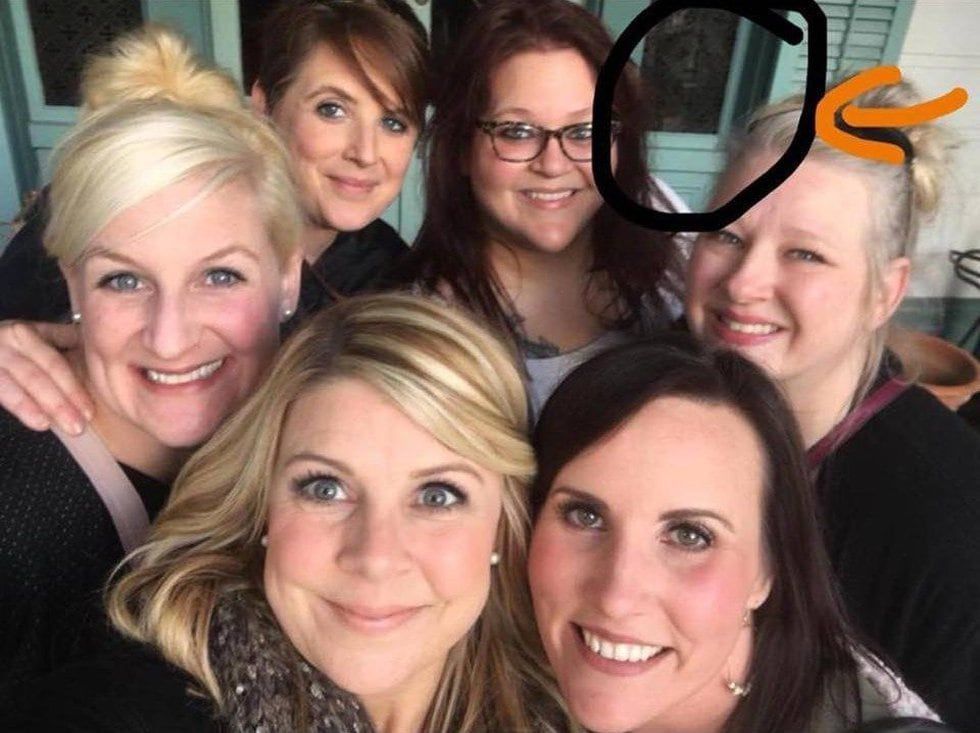
It’s a fearsome tale and a tragic one that sets up perfectly for a ghost story, but the problem is, according to researchers David Wiseheart and Troy Taylor, who investigated the historical record, they never found evidence that she existed. But did discover that the children died, but of something very different than poisoning… we also interviewed Wiseheart in 2012, and he said:
In none of the paperwork for David Bradford, Elizabeth Bradford, for, Clark Woodruff, is there ever a name that's even close to Chloe… Sarah Matilda and the 2 kids, all three died at the Myrtle's, but they all died of yellow fever.
Sarah Matilda died July 21st, 1824. And then the 2 kids died; Cornelia Gail, she died September 16th, 1824. And the other little girl, who happened to be a boy, died July 15th, 1824.His name is James.
Where did the name "Chloe" come from?
Well, according to former Frances Kermeen who owned the property in the late Twentieth Century and even wrote a book called The Myrtles Plantation: The True Story of America's Most Haunted House , it came from someone who took a tour of the place:
I was always told that story by the owner when I moved in. Now there's a very famous photograph at the Myrtles that does show a lighter-skinned slave. But that's definitely not a ghost that I saw. However, a ghost that I saw was also seen by somebody on a tour and they saw her crying. And they said, well, why are you crying? And she said she just learned that her father was white. And that's when this particular ghost said her name was Chloe. And that's how we got that name. It’s not really historically documented, but that’s where we got the name.
The Murder of William Winter
Clark Woodruff eventually sold the Laurel Grove Plantation to Ruffin Gray Stirling in 1834, whose family would own the house for the next several decades. Stirling renovated the property, making it grander than ever, and changed the name to “The Myrtles”, named after the beautiful crepe myrtles (shrubs with beautiful flowers) that populated the property. Stirling’s daughter married William Winter who eventually became the caretaker of the plantation (although losing it to bankruptcy for a short time, Stirling’s family repurchased the property a few short years later.)
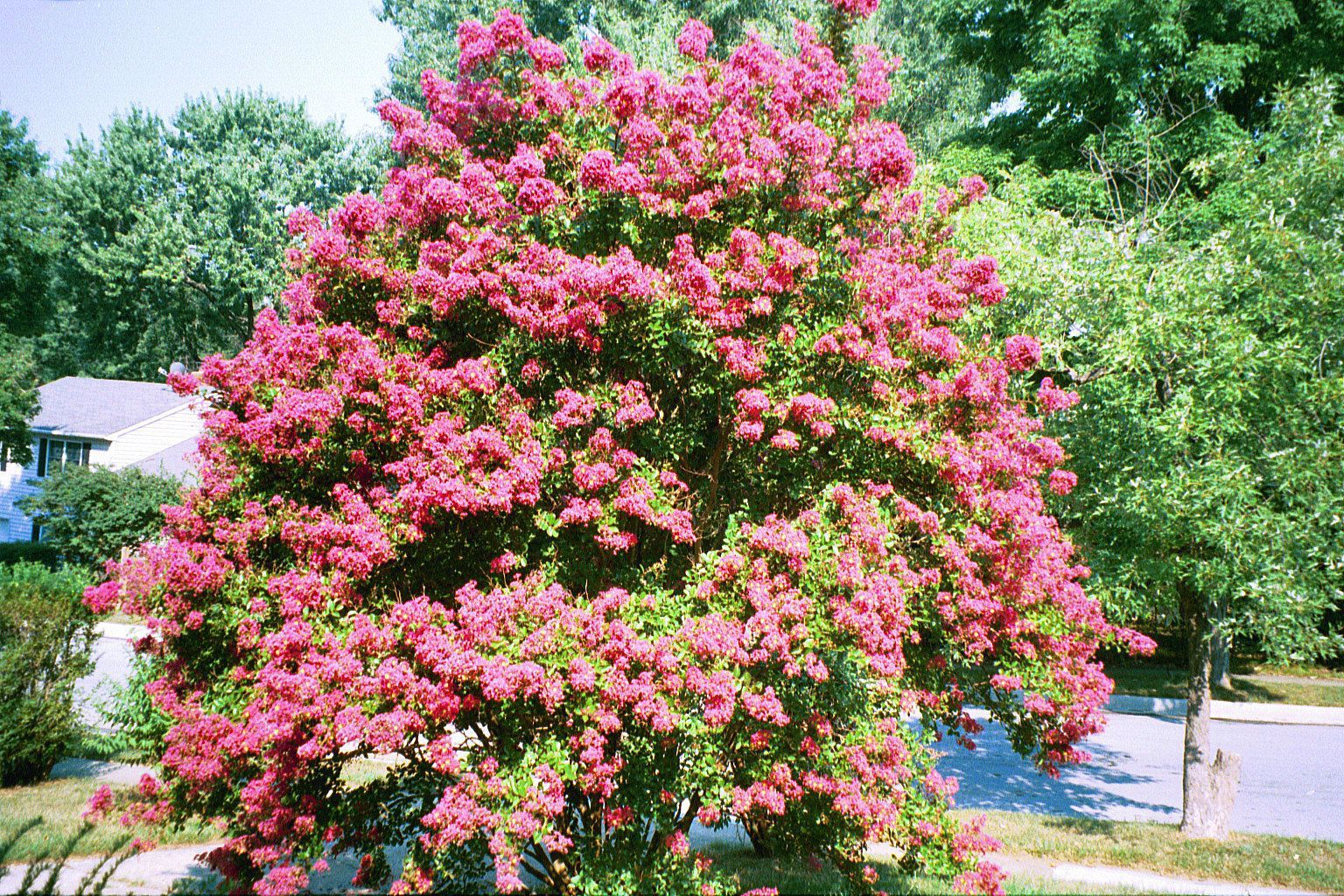
While up to ten(!) murders have been rumored at the Myrtles, only one has been documented and that’s William Winter. According to the January 31st, 1871 New Orleans Times-Picayune :
Wm. D. Winter, residing about three miles from this place, on the Woodville road, was called to his front door by some person unknown, on the night of the the 26th at about 7 o'clock. And as he appeared at the door of his sitting room, there being no one in sight, he requested to know who wished to see him; and at that instant a double barrel gun was discharged at him loaded with seven large buck-hoot, six of which took effect upon his person - five in his breast and one through his neck - killing him instantly upon his stand, He fell and expired instantly, without uttering a word. It is supposed the party firing was on horse back-bringing his gun on a level with Mr. Winter’s body, as his gallery is quite elevated from the ground. This barbarous assassination has filled our whole people with horror and indignation. Suspicion is abroad, and it is hoped the guilty party or parties will soon be arrested. Mr. Winter was an eminent lawyer and most worthy citizen. He leaves a wife and five children to mourn this cruel dispensation of Providence.
While four black men and one white man were arrested for the murder in May of 1871, they were not convicted. Paranormal researcher David Young, who has spent a lot of time at the Myrtles and even had his supernatural experience there featured in the TV show, My Ghost Story, has a theory about the murder. We interviewed him about it in 2012 as well:
We kind of figured out how William Winter was murdered by the Ku Klux Klan and by looking through the historical documents the main suspect was a member of the Ku Klux Klan, but he was never charged in the case. It was at the time, the rising of the Ku Klux Klan, in 1871. there was a quite a controversial governor's race going on. It was the first and only, African American, former slave that became, governor of Louisiana (Pinckney Benton Stewart Pinchback who served for 60 days when the former governor was impeached in 1872.) He was kind of appointed there, which didn’t sit with the locals in Louisiana. The Klu Klux Klan, which was made up of former confederate soldiers started doing their night riding.
And some of the plantation owners just disagreed with it totally. And as I understand it, William Winter was a vocal opponent of the Klan. And we feel that's why he was killed. He walked out onto his veranda when he was called out somebody called out for a lawyer, and he was teaching his children at the time by reading to them. He was called out of the smoking room and right there on the side of the house, a man on the horse shotgunned him and and shot him the death right there. That was January, 26, 1871. so nobody was charged for the case and it remained a mystery all these years and we just kind of, you know, just putting stuff together and and some of the documents we kind of just came to the conclusion that he was killed by the Ku Klux Klan.
And of course, William Winter’s murder did lead to a ghost story according to Frances Kermeen:
He was shot on the North Gallery. He stumbled up to the 17th step of the main staircase and died in his wife's arms… but every single night We hear the 17 steps going up the stairs.
And of course, David Wiseheart throws a little cold water on that as well as it states in the newspaper:
When it stops being true is the part where he walks back into the house, he's on the stairs…. The guy shot him with the shotgun, and he fell dead right there on the porch.
So are there real ghost stories at The Myrtles?
Well, we probably can’t convince you that ghosts are real, but people have had many paranormal experiences at the plantation since it’s been turned into a Bed and Breakfast in the early 70s by Frances Kermeen and plenty of strange activity has been recorded. According to tour director Hester Eby, one of the most active rooms is the Ruffin Stirling Room:
The Ruffin Stirling Room has been referred to earlier as the children's nursery. A lot of guests have told us, they have heard children crying or child sounds like a baby crying. We had a group of nurses here, and there are four rooms on that side and Ruffin Sterling is one of them. And they had booked all 4, but unfortunately, one of the ladies could not come. And they said late night, they heard a child crying, and being in their profession, you know, of course, they knocked to see if they could help. And they said a lady answered and just told them to go away. But they said the cry upset them so that they went and got management. But when they went in, of course, no one was there. But the children’s nursery has always had stories behind it. They like to play in makeup in that room, so we've had a lot of ladies had their makeup kinda disturbed. They, for some reason, must think that, the tubes of lipstick may be some type of candy because they often will either bite into or break the lipstick. And when, our guests look for them, you know, I can tell them it it's chances are it's under the bed, and it is.
And according to Kermeen, that room was used for a much more sinister purpose:
That's an interesting room because the judge, Judge Clark Woodruff would take slaves there to rape them while the children were out playing, if that was his spot. And, that's where Sarah actually caught him one day. But single ladies who sleep in that room are often seduced…
I would have people occasionally, you know, I'd say, how did you sleep? They conversation at breakfast and they go, well, you know, the baby in the next room cried all night long. and then we'd have to tell them there was nobody else upstairs. You were the only guest, and that must have happened a hundred times while I owned the house. or or people would be working upstairs, and they would hear it. And then they'd leave the job, and I'd have to find somebody else.
One of my favorite stories there, though, comes from David Young, who heard about when Hollywood came knocking at the Myrtles door. In the mid-1980s, the film The Long Hot Summer filmed at The Myrtles and the cast list was impressive, including Don Johnson, Cybill Shepherd, Jason Robards, and Ava Gardner. According to David Young, even the cast and crew experienced some paranormal disturbances:
They were filming in the dining room. And if you've ever seen the movie, it's a scene where Don Johnson arrives, and he wants to talk to the former beau of this woman that has taken a liking to him. And, you know, Don Johnson is sort of a wandering kind of tough guy. And, Jason Robard's daughter was dating this man, a local lawyer or something. So the scene has Don Johnson goes to tell him “don't feel threatened by me. I'm not interested in your girlfriend or anything.” And it was really a short scene. They changed that dining room into a study or a library. And it took them forever to film that scene because every time they did, things would get messed up. Things were knocked over, moved around, missing stuff you know. And it got to a point they had to put somebody there in the room to make sure nothing changed so they can finish the scene. And then spooked Ava Gardner and Jason Robard so much, they were they were gonna stay in the house and they ended up staying outside in trailers. They didn't want anything to do with the house or go into it at all. And, of course, Don Johnson and Cybill Shepherd that didn't matter to them. They had a hard time getting them out of the bedroom!
We haven’t even covered the supposedly haunted mirror with the handprints of the child ghosts that people have also seen regularly, or the Confederate soldiers who seem to show up more in the Summertime, or the story Frances Kermeen’s husband was possessed by the old owner. Many EVPs and photographs have been taken at The Myrtles. Even Troy Taylor and David Wiseheart admit that there’s probably paranormal activity there, they just want to be sticklers for the history (a view that we endorse wholeheartedly on our tours, American Ghost Walks Number One Rule is that “we don’t make anything up!”)
My sister Allison and I spent a night at the house back in the Summer of 2000. While we didn’t experience any paranormal activity ourselves, there was a couple that was supposed to stay in the room across from us, but they left before the night even started. They were in their room with the door closed and they heard people talking and laughing in the upstairs, but when they came out, no one was there. They packed up and left. I didn’t sleep a lot that night, so I wandered around the house and the grounds, no supernatural unfortunately, but I did enjoy the ambience of the beautiful plantation.
If you’re interested in listening to our entire interview, you can hear Frances, Hester, and the Davids in this See You On The Other Side podcast we did a few years back.
And if you’d like to learn more about the haunted history of Lousiana, you can join us in New Orleans. Our French Quarter tours can show you the real haunted history (and separate fact from fiction, just like this article!) of the Big Easy.
Want to hear firsthand what our guests have experienced? Check out our
Google Business Profile Reviews and see why our tours leave a lasting impression!
Find Your Next Paranormal Experience
Garden District Ghost Walk
Discover one of New Orleans' most beautiful and haunted spots, Magazine Street in the Garden District.
from $35 per person

